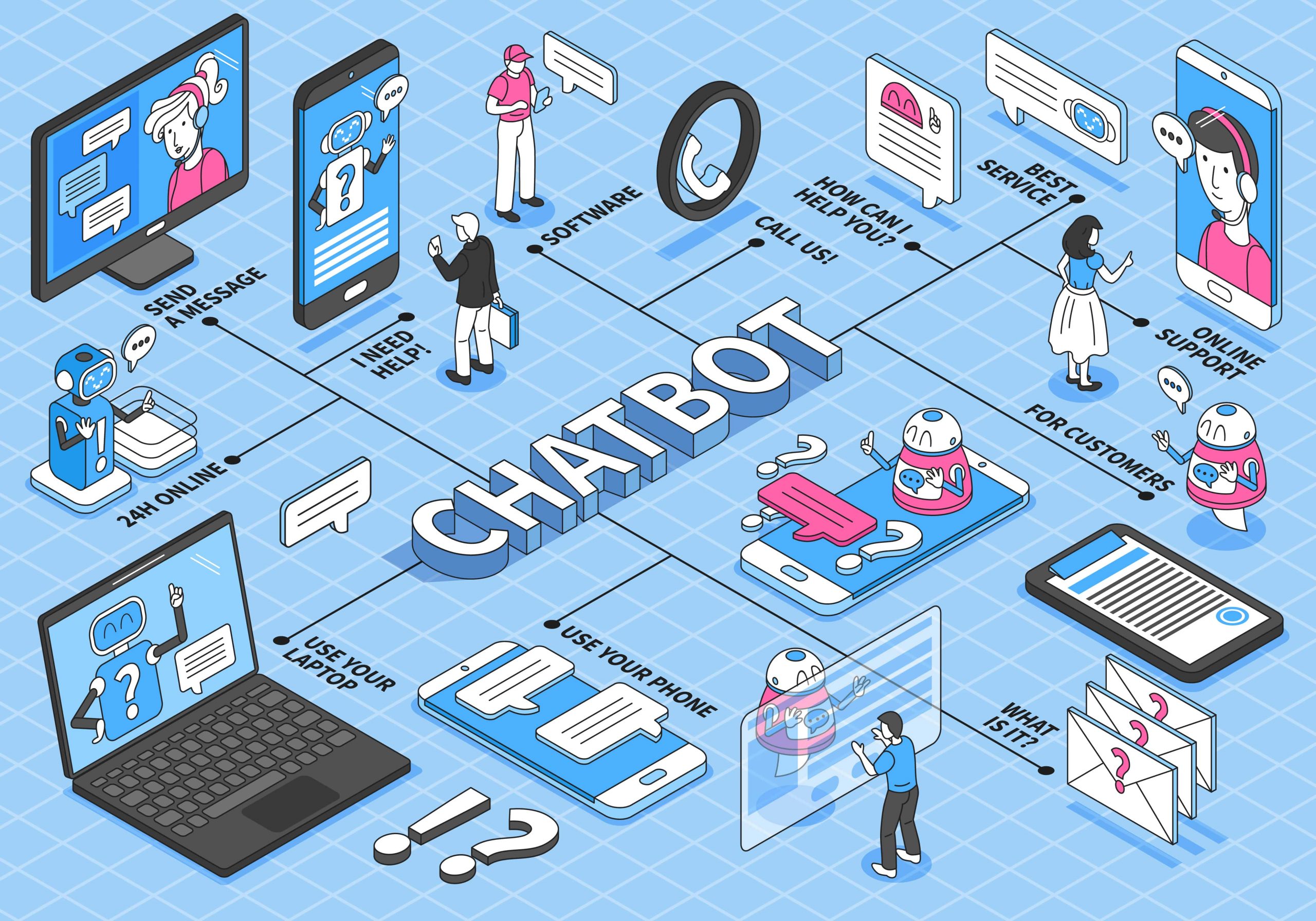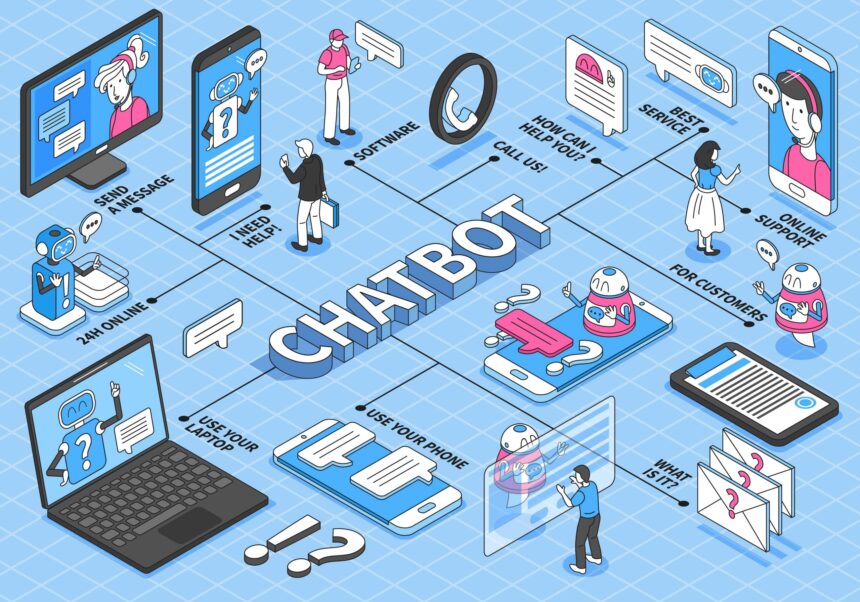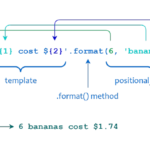
Technology dominates today’s business world. Companies and organizations rely on chatbots to provide exceptional customer service. Chatbots have transformed from basic question-answering tools to intelligent conversational agents capable of comprehending natural language and giving tailored recommendations.
Using chatbots in the future is revolutionizing how companies communicated with their clients earlier. In the digital age, chatbots are becoming increasingly crucial for all small and big businesses, managing everything from customer service to creating customized production solutions.
The use of chatbots will continue to rise across businesses as long as AI and machine learning technology advances.
By 2030, the chatbot market size will likely reach $3.99 billion. These figures indicate the growing acceptance of chatbots. The development of artificial intelligence (AI) and machine learning (ML) technology, which made it possible for more complex chatbot solutions, are the primary factors of this growing trend. As a result, more businesses in the future will adopt AI-powered chatbots in their marketing, sales, and business operations.
Chatbot Trends and Technologies in the Future
As we approach 2024, businesses must explore the newest chatbot development services to enhance the user experience. Many industries employ chatbots to guide visitors on their websites or answer their queries, and with competition at an all-time high, customers expect more from brands.
Including chatbots in your customer service strategy can help meet these expectations. Additionally, as AI advances, chatbots will become even more sophisticated. In 2023, chatbot trends and technology will progress and reach new heights.
Below are some of the most popular chatbot trends and technologies to expect in the upcoming year:
Automated/AI Call Center
Experts anticipate that automated call centers will become a reality this year. AI advancements will enable chatbots to become more human-like and play a crucial role in automating call center services. In addition, AI-integrated natural language processing (NLP) will enhance chatbot intelligence, allowing them to assist customers like human beings.
According to research, approximately 70% of users are dissatisfied with their customer experience (CX). Chatbots will help address customer service issues proactively and prevent customer dissatisfaction.
Additionally, enterprise bots will assist in reducing customer abandonment rates while enhancing service, sales, and revenue and controlling costs.
Faster Recruitment Process via HR Bots
A recruiting chatbot can filter candidates, respond to their basic inquiries, and arrange interviews, accelerating recruitment. In addition, these chatbots are beneficial even post-hiring, as they can answer fundamental HR questions during onboarding. That is particularly advantageous for large organizations with extensive workforces.
Automated Payments/Transactions
Modern enterprises can implement a chatbot that guarantees data security and information protection alongside payment infrastructure. This enables businesses to automate direct payments via live chat or Facebook Messenger apps.
The instant payment process furnishes chatbots with enough data to stimulate conversation-driven cross-selling and upselling. Furthermore, chatbots can keep users updated on their transaction data, expense records, payment confirmations, etc., leading to a high customer retention rate.
Low Code Platforms for Quicker Chatbot Development & Deployment
The pandemic compelled companies to enhance their agility in processes, resulting in the creation of low-code chatbot platforms that enable businesses to deploy apps at a faster pace. Even novice users can construct chatbots using these low-code development platforms.
This approach has facilitated the deployment of chatbots for various purposes, such as sales support, customer support, service desk management, and more, by several organizations.
Self-Learning Chatbots
In 2023 and beyond, experts expect companies to develop self-learning chatbots. That implies that businesses will not have to spend time updating bots with new data. However, training bots with new data and keeping them updated is crucial to maintain a competitive edge.
Instead, the bots will analyze patterns in every interaction and learn to keep users or customers engaged. In addition, bots will learn to enhance their response capabilities based on user feedback.
AI-powered Chatbots
The popularity of AI-powered chatbots is growing due to their ability to offer personalized and human-like conversations. In 2023, we can expect a significant increase in AI-powered chatbots that can understand human emotions and intentions.
Chatbots for E-Commerce
E-commerce businesses will continue to find chatbots as valuable tools for assisting customers in finding products, placing orders, and tracking shipments. In addition, as technology evolves, the industry will witness chatbots advance and become more intelligent. This will provide customers with a more personalized and engaging shopping experience.
Conversational Commerce
The trend of conversational commerce has been gaining popularity in recent years, which involves using chatbots and other conversational interfaces to buy and sell products or services.
In 2023, experts expect this trend to continue as businesses seek ways to enhance the customer experience. Additionally, voice assistants such as Amazon Alexa, Google Assistant, and Apple Siri are increasing rapidly.
Integration with Machine Learning and AI
Companies plan to integrate chatbots with machine learning and AI to offer users more intelligent and predictive responses. With the help of machine learning algorithms, chatbots will be capable of learning from user interactions, and they will enhance their responses with time.
Integration with Social Media
Social media serves as a crucial platform for social interaction in present times. From making friends to expressing opinions, purchasing products and services, providing reviews, and contacting businesses, social media has evolved significantly.
Consequently, it has become essential for businesses to utilize chatbots to facilitate interaction on these platforms. As a result, several industry leaders in various sectors have already incorporated chatbots to leverage this critical resource to comprehend customer needs better and enhance how the business can assist consumers.
Brands using chatbots on social media have emerged as a chatbot trend. Although Facebook already offers a chatbot feature, it has limited capabilities. Therefore, it was only a test to determine the effectiveness of chatbots on the platform.
The results were overwhelmingly positive, and Facebook has now set the trend by enabling businesses to use customized chatbots created by other parties to enhance this process. Every social media platform will likely follow suit.
Chatbots offer a personalized and convenient way for customers to engage with businesses. Therefore, the companies will continue integrating them into social media platforms like Facebook Messenger, WhatsApp, and Instagram.
That will allow businesses to reach their customers on their preferred social media channels, making social media chatbots an ideal way to communicate with their clients and friends and share information.
Natural Language Processing (NLP)
Chatbots will rely on NLP as a critical component to comprehend and interpret user language, ensuring they can provide relevant responses. In the upcoming years, we can expect NLP to become more advanced, allowing chatbots to recognize and respond to more complex queries and commands.
Personalization and Context-Awareness
Companies can create more personalized and context-aware chatbots that offer tailored responses based on user behavior, preferences, and history. As a result, chatbots can provide users with more relevant and helpful information.
Also Read: How to Make an AI Chatbot – No Code Required.
Voice-Based Chatbots
In 2023, businesses will increasingly integrate voice assistants like Amazon Alexa and Google Home into their chatbot strategies, making voice-based chatbots more popular. That will offer a more natural and convenient way for users to interact with businesses.
What is a Chatbot Development Framework?
In simple words, a chatbot development framework refers to a set of coded functions and elements. This framework helps developers speed up the bot-building process. Some popular options for choosing a robust chatbot development framework include Microsoft Bot Framework, Rasa, OpenDialog, and Golem.
However, Microsoft Bot Framework is one of the most popular choices when it comes to the best chatbot development framework. It delivers outstanding results when combined with other Microsoft tools like Bot Builder and Azure Bot Builder.
Chatbot Challenges to Face in The Future
Creating natural language processing (NLP) skills for chatbots is one of the most noticeable issues. These skills are essential because chatbots must comprehend user requests to offer insightful responses. The chatbot also requires NLP technologies to recognize themes associated with the user’s query or request.
Developing a variety of knowledge bases is also a significant difficulty for the chatbot industry. Knowledge bases refer to the data archives that the chatbot can utilize to respond to user inquiries. The knowledge base must expand with the number and variety of prospective questions. That’s one of the significant obstacles for today’s developers trying to design chatbots for more complex activities like product recommendations and human-like customer support.
Creating a powerful user interface is also crucial for an effective chatbot. Users must be able to interact with chatbots and comprehend their responses. To do this, developers must create chatbots with the appropriate personality and tonality. They must also use simple and easy-to-use GUIs or graphical user interfaces.
Also Read: How Can We Make Chatbots Intelligent?
Final Thoughts
Understanding customers’ needs and wants is crucial for any business’s success. Similarly, a comprehensive understanding of the business and its customers is necessary to create an effective chatbot. As the conversational AI market matures, businesses must strategically develop and implement chatbots across various channels to survive.
Haphazardly designed chatbots will fade away, leaving only the well-crafted ones behind. Despite this, chatbots will continue to enhance customer support and boost user engagement.
References
“The Best Chatbot Development Frameworks To Consider in 2023 – Intelvue.com.
“https://www.intelvue.com/best-chatbot-framework/“. Accessed 8 May. 2023.
“Five Artificial Intelligence Predictions For The Near Future” – Forbes.com.
“https://www.forbes.com/sites/forbesbusinesscouncil/2023/02/28/five-artificial-intelligence-predictions-for-the-near-future/?sh=5e8aaf855f18” Accessed 8 May. 2023.
“Chatbot Market to Hit $3.99 Billion by 2030 at CAGR 25.7%: Grand View Research, Inc” – Prnewswire.com.
“https://www.prnewswire.com/news-releases/chatbot-market-to-hit-3-99-billion-by-2030-at-cagr-25-7-grand-view-research-inc-301741773.html” Accessed 8 May. 2023.











